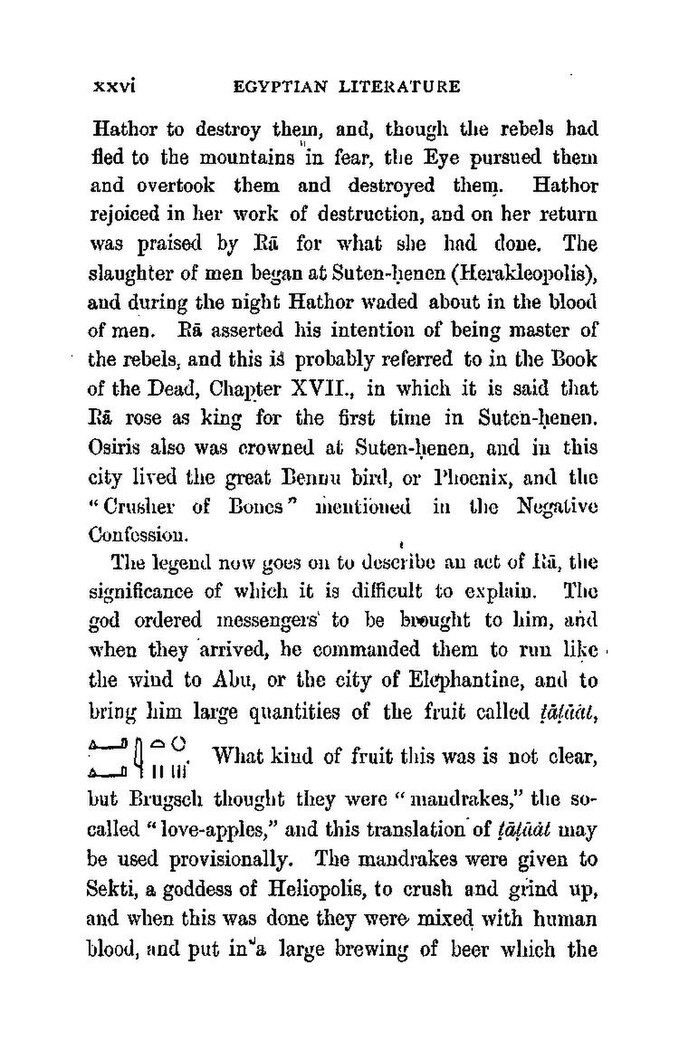Hathor to destroy them, and, though the rebels had fled to the mountains in fear, the Eye pursued them and overtook them and destroyed them. Hathor rejoiced in her work of destruction, and on her return was praised by Rā for what she had done. The slaughter of men began at Suten-ḥenen (Herakleopolis), and during the night Hathor waded about in the blood of men. Rā asserted his intention of being master of the rebels, and this is probably referred to in the Book of the Dead, Chapter XVII., in which it is said that Rā rose as king for the first time in Suten-ḥenen. Osiris also was crowned at Suten-ḥenen, and in this city lived the great Bennu bird, or Phoenix, and the “Crusher of Bones” mentioned in the Negative Confession.
The legend now goes on to describe an act of Rā, the significance of which it is difficult to explain. The god ordered messengers to be brought to him, and when they arrived, he commanded them to run like the wind to Abu, or the city of Elephantine, and to bring him large quantities of the fruit called ṭāṭāāt,
| |
What kind of fruit this was is not clear, but Brugsch thought they were “mandrakes,” the so-called “love-apples,” and this translation of ṭāṭāāt may be used provisionally. The mandrakes were given to Sekti, a goddess of Heliopolis, to crush and grind up, and when this was done they were mixed with human blood, and put in a large brewing of beer which the
